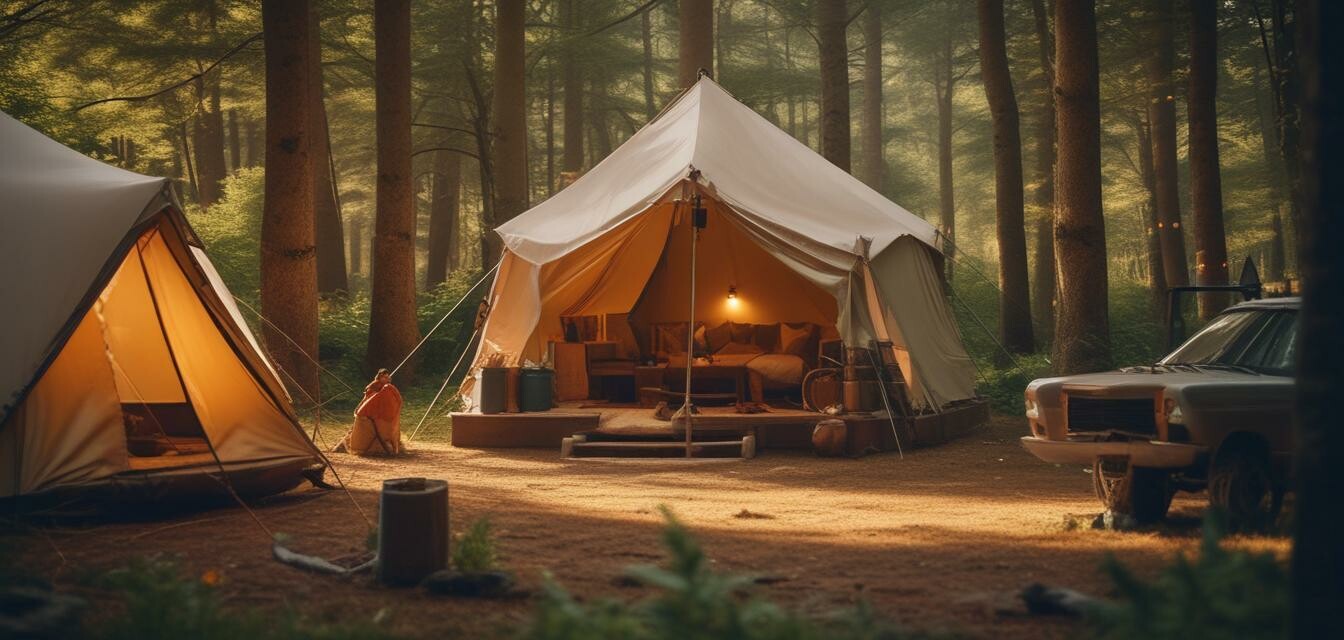
A Look at Popular Camping Styles for Beginners
Key Takeaways
- 2025 introduces diverse camping styles, making it easier for beginners to choose.
- Glamping offers luxury and comfort in nature, appealing to those looking for a unique experience.
- Traditional camping encourages connection with nature and self-sufficiency.
- Understand the differences between various styles to enhance your outdoor adventures.
- Eco-friendly camping is gaining traction, with sustainable gear and practices becoming popular.
Camping is a beloved activity that allows people to immerse themselves in nature, escape from daily routines, and enjoy memorable experiences. As we enter 2025, there's a noticeable evolution in camping styles, catering to various preferences, comforts, and ideologies. Whether you're a novice looking to dip your toes into the great outdoors or someone seeking an adrenaline rush, this guide will help you navigate the emerging trends and find the right fit for your adventures.
Understanding Different Camping Styles
Choosing a camping style is essential for planning your next adventure. Below, we've outlined popular camping styles along with their characteristics, helping beginners identify which suits them best.
| Camping Style | Description | Best For |
|---|---|---|
| Glamping | A luxury camping experience that combines nature with modern comforts. | Individuals or families looking for comfort in nature. |
| Traditional Camping | Setting up a tent in a natural environment with basic amenities. | Those seeking a genuine outdoor experience and self-sufficiency. |
| RV Camping | Traveling and camping in a recreational vehicle offering amenities and mobility. | Families or groups who want comfort and travel convenience. |
| Backpacking | Carrying a pack with essential gear and hiking to remote locations. | Adventurers looking for a challenge and wilderness exploration. |
| Car Camping | Camping close to your vehicle, allowing for larger gear and comfort. | Beginners who want to enjoy nature with conveniences. |
| Eco-Friendly Camping | Focusing on sustainable practices and using eco-friendly gear. | Environmentally-conscious campers looking to minimize impact. |
1. Glamping: The New Trend in Camping
Glamping, or glamorous camping, is growing in popularity among those who appreciate nature but prefer the comforts of home. With upscale tents, yurts, and cabins featuring stylish decors and modern amenities, glamping is ideal for families and couples seeking a unique getaway experience. Here are some key features:
- Luxurious bedding and furniture.
- Private restrooms and showers.
- Unique locations, often with breathtaking views.
2. Traditional Camping: A Time-Tested Method
This style remains popular for those who want to immerse themselves in nature without distractions. Whether in parks or forests, traditional camping typically involves pitching a tent and utilizing minimal gear. Here are some benefits:
- Reduced stress from the hustle of daily life.
- Improved survival skills and self-discovery.
- Community interactions through shared campgrounds.
3. RV Camping: Moveable Comfort
RV camping is perfect for those who enjoy traveling and want the convenience of amenities at their fingertips. Here's what RV camping brings:
- Access to electricity and water.
- A kitchen for meal preparation.
- Comfortable sleeping arrangements.
4. Backpacking: For the Adventurous Spirit
If you’re looking for a challenge, backpacking might be your style. This adventurous approach emphasizes physical fitness and exploration. Here are some key points:
- Requires careful packing and planning.
- Encourages fitness and endurance.
- Often leads to secluded and beautiful landscapes.
5. Car Camping: The Easy Option
For those just starting or looking for a simple getaway, car camping is an accessible option. It allows you to bring more gear without the hassle of heavy lifting. Notable aspects include:
- Space to store extra supplies.
- Ability to cook meals using a portable grill.
- Convenience in accessing your vehicle.
6. Eco-Friendly Camping: A Sustainable Choice
As environmental awareness grows, eco-friendly camping practices are on the rise. This style encourages the use of sustainable gear, waste reduction, and conservation. Key points include:
- Using solar-powered devices.
- Minimizing campfire usage to protect wildlife.
- Choosing biodegradable products.
Finding the Right Fit for You
Choosing the right camping style ultimately depends on your personal preferences, comfort levels, and the experience you seek. Consider the following before deciding:
- Your level of outdoor experience.
- The type of environment you wish to explore.
- The amenities you would like during your camping experience.
Conclusion
Camping styles are rapidly evolving as we step into 2025, allowing beginners to choose an experience that suits their preferences. Whether you desire the comforts of glamping, crave the authenticity of traditional camping, or look for sustained exploration through backpacking, understanding these styles can enrich your outdoor adventures. Don't hesitate to explore different options to discover what works best for you!
Beginner Tips for Choosing Your Camping Style
- Start with local spots to get comfortable before venturing further.
- Research different styles and read reviews from other campers.
- Consider your travel companions' preferences.
- Join camping community forums to gather advice and recommendations.
- Explore our Camping Buying Guides for more insights on starting your camping journey.
Pros
- Diverse options cater to various preferences and comfort levels.
- Camping encourages adventure and connection with nature.
- Styles like eco-friendly camping support sustainable practices.
Cons
- Each style may have varying levels of preparation and expense.
- Some individuals may prefer a more authentic wilderness experience.
- Availability of options may vary by location.
Remember, no matter your chosen style, the most important thing is to enjoy your time outdoors!